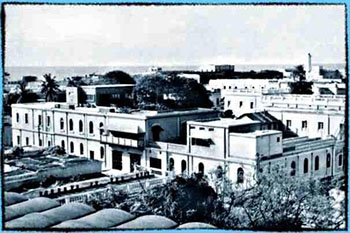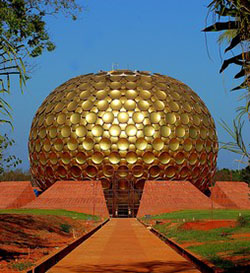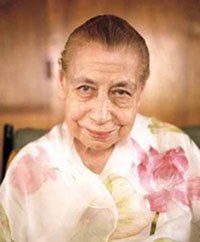Pondicherry - Welcome to Umamani.com
Main menu
Pondicherry
Vintage Pondicherry: Light on the Ashram
Houses stretch endlessly in parallel lines, as the rickshaw takes you from the bus stand. Shops of various styles and moods open onto narrow pavements. People move about, cyclists pedal along – as anywhere else in Southern India. Then you cross the bridge and instinctively you sense the difference. Houses still overlap but there is no crowd, no dirt. The road breaks into a square and the Auro dining hall stands at one corner. ‘Here’s Pondichery’ the tourist will exclaim if he is a spiritualist. Of course for the lover of scotch and soda, gin and tonic there is the other Pondy lurking in the nooks and corners of the ‘black’ town.

The ashram building are distempered in grey. They are spread all over the white town, a few even along the beach. Here the imprimerie (printing press) of the Aurobindo Ashram works on quite undisturbed by the din and clamour of its neighbour, ‘Hotel Continental’. The Ashram is self- Then there is Auroville. But for the rains we could have seen it. From hearsay I understand it is international in outlook and structure. When I am waiting with many foreigners to have the Mother’s Darshan on Nov, 24, I can breathe in this international spirit.
Then there is Auroville. But for the rains we could have seen it. From hearsay I understand it is international in outlook and structure. When I am waiting with many foreigners to have the Mother’s Darshan on Nov, 24, I can breathe in this international spirit.
The work done by the international centre for eduction cannot be separated from Pondicherry’s post-
The centre’s precept is a health development of mind and body. There is a physical training centre near the main ashram, further away the sports centre with a lovely swimming pool. Don’t be shocked to see girls in shorts pedaling along Cours Boulevard or bargaining at Honesty Stores. Quite common in this otherwise conservative town.
A foreigner wearing a dhoti bows before Sri Aurobindo’s samadhi, his forehead touching its edge. Women in white arrange colourful floral patterns on the marble slab. They move about silently. I am reminded of Rajghat. But never before had I been so moved by the incense sticks, the breath of flowers and silence as now. I feel I am a bird flying higher in the clear blue sky.
On Mother’s day you can visit Sri before Aurobindo’s room. A tiger skin is spread before the master’s portrait. Strangely it reminds you, not only of his ascetic life, but also of his youth as a Bengal extremist in the freedom movement. Two startlingly different attitudes reflected in a tiger skin. The Mother gives one of her darshans on Nov, 24. A balcony opens into a side-
The Mother gives one of her darshans on Nov, 24. A balcony opens into a side-
(This article was written in the seventies)